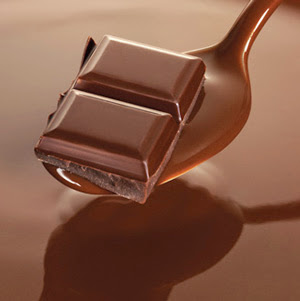Conventionally manufactured chocolate consists of sugars, cocoa solids and protein (usually from milk) homogeneously dispersed in fats and fatty substances originating from cocoa butter. Chocolate analogues contain other vegetable fats in partial/total replacement of the cocoa butter fat. Often the continuous fat phase also contains dairy fat.
Cocoa butter typically starts to soften at about 28°C, with consequent loss of the mechanical strength of the chocolate. This means that at the high ambient temperatures frequently encountered in tropical countries, chocolate becomes sticky or even runny. It tends to stick to the wrapper and fall apart when the wrapper is removed, leaving a semi-liquid mass that can often only be eaten with a spoon if cleanliness is desired.
There is an ongoing need to provide a tropicalising agent that delays any substantial increase in viscosity so the materials can be used for conventional moulding or enrobing processes and that provides a suitable texture and stability, or integrity, in a chocolate product. The inventor has developed a substantially different route to introduce water and/or a humectant into chocolate or an analogue to obtain a heat resistant chocolate or analogue.
It has surprisingly been found by the inventor that insoluble water-absorbing food ingredient particles can be used as a vehicle for the introduction of water and/or a humectant into liquid chocolate mass. The insoluble food ingredient particles loaded with water and/or a humectant can be added to liquid chocolate mass without any significant viscosity increase over normal processing times, allowing processing of the chocolate by standard moulding or enrobing technologies, and act as a tropicalising agent, improving heat resistance of the resultant chocolate.
Advantageously the tropicalising agent of the present invention can be prepared from food ingredients and does not require the use of any emulsifying agent, gelling agent, nor other additive. The tropicalising agent is suitable for use in chocolate, whereby food regulations in many countries restrict or forbid the addition of artificial additives to chocolate. It can be added to liquid chocolate mass without inducing any significant increase in viscosity of the liquid chocolate mass over time, such that the chocolate mass can be worked and moulded, or used for enrobing, in conventional industrial production processes, whilst at the same time providing a chocolate product that exhibits improved shape stability at elevated temperatures above room temperature, e.g. at temperatures up to 40°C, and even at higher temperatures.
The chocolate product is dry to the touch and does not stick to its wrapper, or adopt the shape of the wrapper, even when exposed to temperatures above the melting range of the fat composition. Good texture and organoleptic properties of regular chocolate are retained. This is exemplified by the fact that chocolate products comprising the tropicalising agent according to the invention are found to exhibit the expected organoleptic properties of regular chocolate when eaten at room temperature, e.g. snap, melt in the mouth, smooth texture and without any intrusive different (non-chocolate) flavours. Advantageously, the effect occurs whilst being able to minimise or avoid the gritty textural quality that is associated with large sugar crystal clusters.
The tests were carried out on a Stable Micro Systems TA.XTplus texture analyser, fitted with a 40mm back extrusion disc. Penetration depth to 2.5 mm was measured at a speed of 1.00 mm/s, with a trigger force of 0.1N. The higher the maximum force (maximum force=force required for penetration of the 40mm disk to a depth of 2.5mm in the sample) measured by the texture analyser, the firmer the compound sample, and therefore the greater the heat stability of the compound sample.
• View a similar test in action...
• Another relevant texture test for chocolate...
• Read the full patent...
• Read our blog post ‘Texture Analysis: Is chocolate demoulding an issue for you?’...
• View our overview of texture analysis methods for confectionery products...
 The TA.XTplus texture analyser is part of a family of texture analysis instruments and equipment from Stable Micro Systems. An extensive portfolio of specialist attachments is
available to measure and analyse the textural properties of a huge range of
food products. Our technical experts
can also custom design instrument fixtures according to individual
specifications.
The TA.XTplus texture analyser is part of a family of texture analysis instruments and equipment from Stable Micro Systems. An extensive portfolio of specialist attachments is
available to measure and analyse the textural properties of a huge range of
food products. Our technical experts
can also custom design instrument fixtures according to individual
specifications.No-one understands texture analysis like we do!
To discuss your specific test requirements click here...
 |  |  |


No comments:
Post a Comment